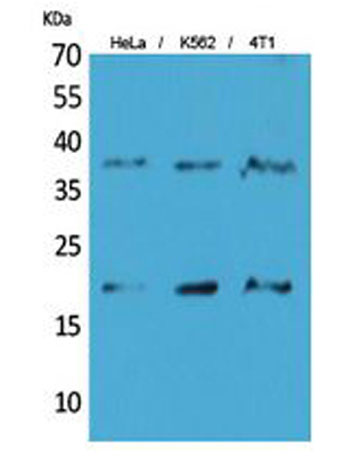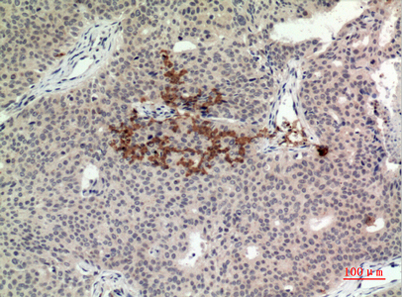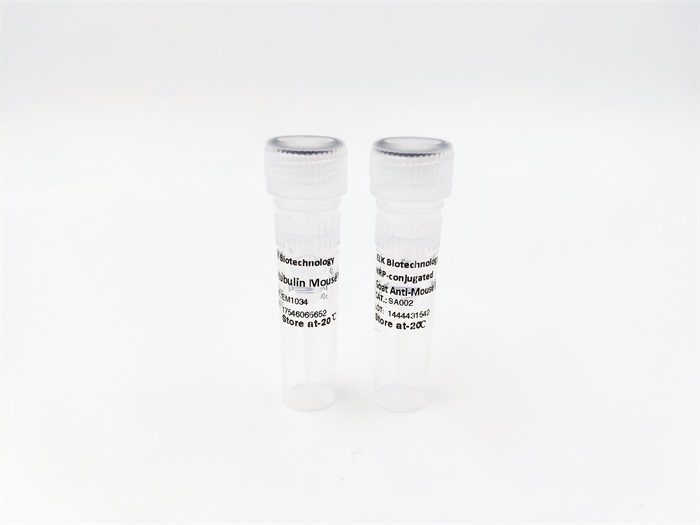







STING/TMEM173 rabbit pAb
 One-click to copy product information
One-click to copy product information$148.00/50µL $248.00/100µL
| 50 µL | $148.00 |
| 100 µL | $248.00 |
Overview
| Product name: | STING/TMEM173 rabbit pAb |
| Reactivity: | Human;Mouse |
| Alternative Names: | TMEM173; ERIS; MITA; STING; Transmembrane protein 173; Endoplasmic reticulum interferon stimulator; ERIS; Mediator of IRF3 activation; hMITA; Stimulator of interferon genes protein; hSTING |
| Source: | Rabbit |
| Dilutions: | Western Blot: 1/500 - 1/2000. IHC-p: 1/100-1/300. ELISA: 1/20000. Not yet tested in other applications. |
| Immunogen: | Synthesized peptide derived from Transmembrane protein 173 at AA range: 301-350 |
| Storage: | -20°C/1 year |
| Clonality: | Polyclonal |
| Isotype: | IgG |
| Concentration: | 1 mg/ml |
| Observed Band: | 38kD |
| GeneID: | 340061 |
| Human Swiss-Prot No: | Q86WV6 |
| Cellular localization: | Endoplasmic reticulum membrane ; Multi-pass membrane protein . Cytoplasm, perinuclear region . Endoplasmic reticulum-Golgi intermediate compartment membrane ; Multi-pass membrane protein . Golgi apparatus membrane ; Multi-pass membrane protein . Cytoplasmic vesicle, autophagosome membrane ; Multi-pass membrane protein . Mitochondrion outer membrane ; Multi-pass membrane protein . Cell membrane ; Multi-pass membrane protein . In response to double-stranded DNA stimulation, translocates from the endoplasmic reticulum through the endoplasmic reticulum-Golgi intermediate compartment and Golgi to post-Golgi vesicles, where the kinase TBK1 is recruited (PubMed:19433799, PubMed:30842659, PubMed:30842653, PubMed:29694889). Upon cGAMP-binding, translocates to the endoplasmic reticulum-Golgi interme |
| Background: | This gene encodes a five transmembrane protein that functions as a major regulator of the innate immune response to viral and bacterial infections. The encoded protein is a pattern recognition receptor that detects cytosolic nucleic acids and transmits signals that activate type I interferon responses. The encoded protein has also been shown to play a role in apoptotic signaling by associating with type II major histocompatibility complex. Mutations in this gene are the cause of infantile-onset STING-associated vasculopathy. Alternate splicing results in multiple transcript variants. [provided by RefSeq, Sep 2014], |

 Manual
Manual